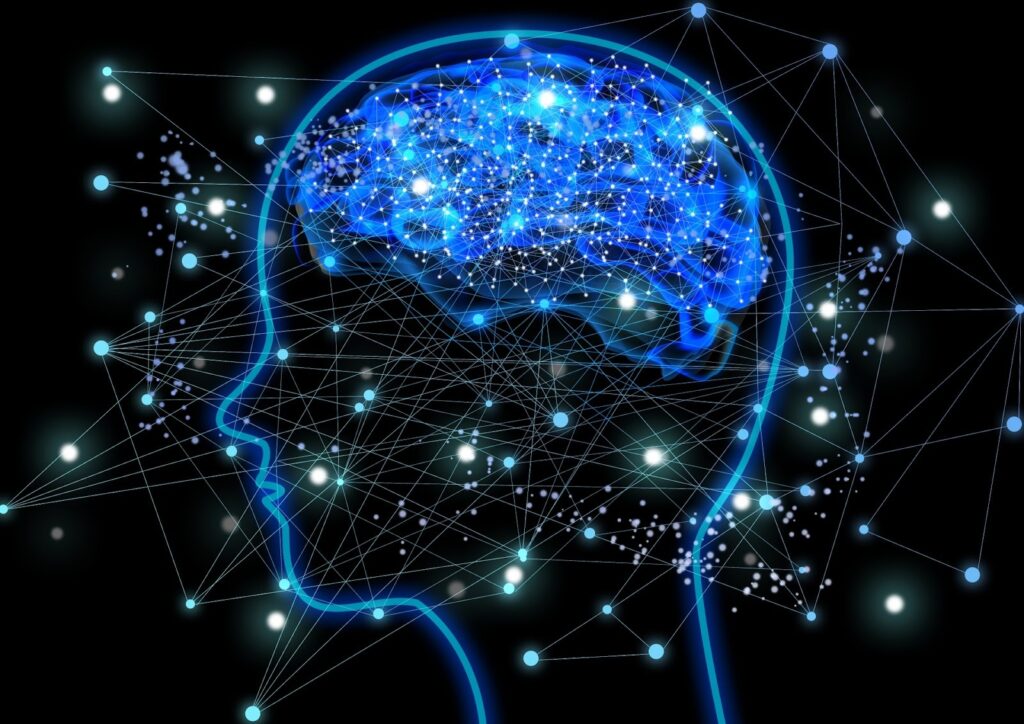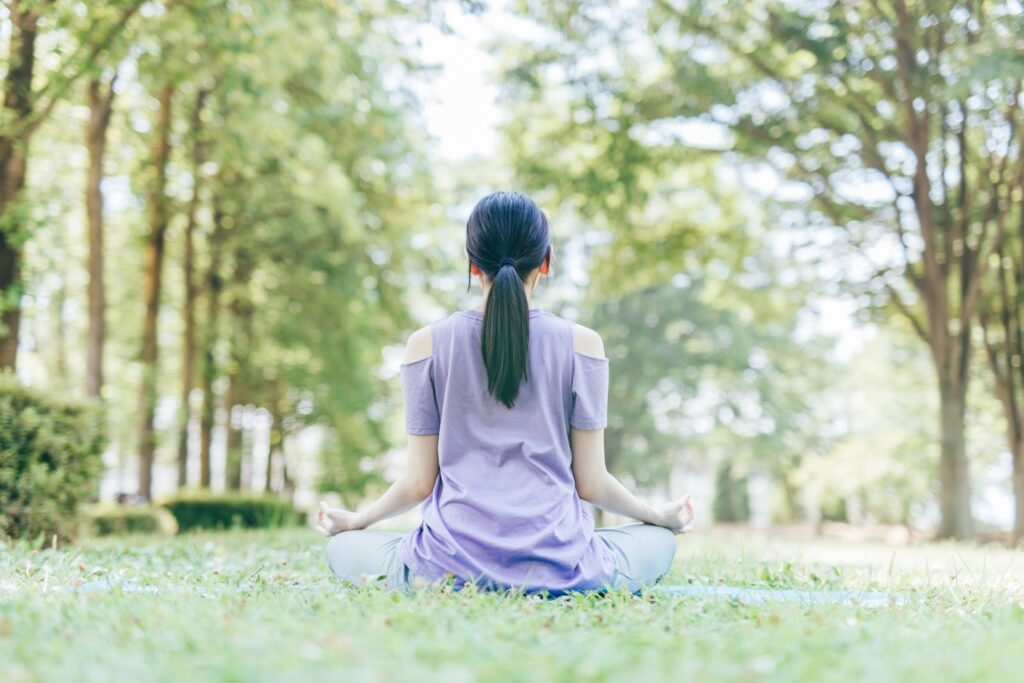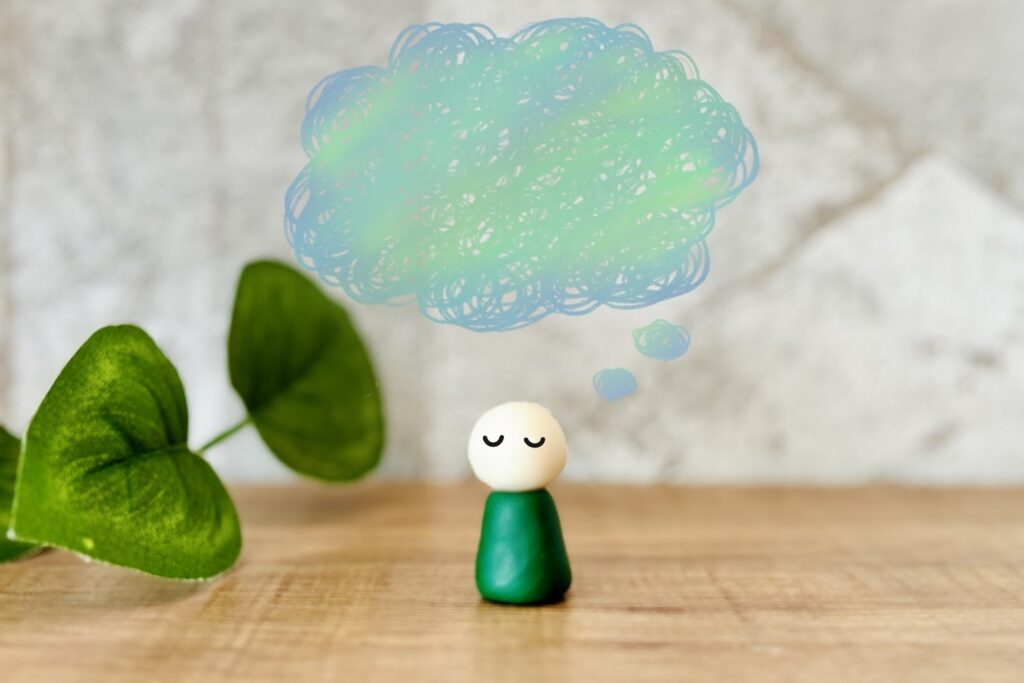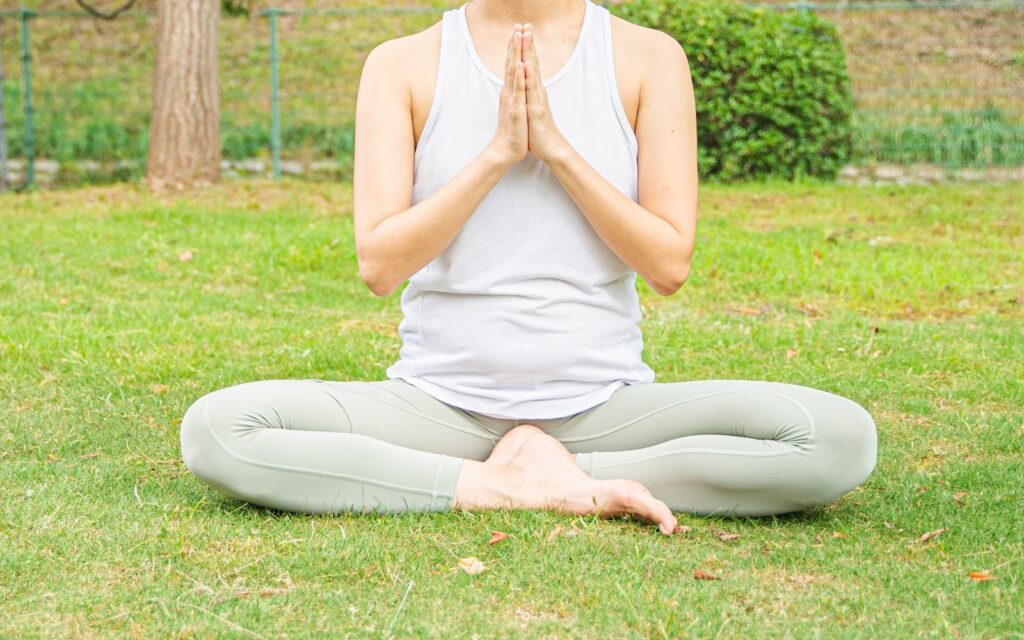Joe Dispenza Meditation: Science and Buddhist Gassho

Quick Summary
Joe Dispenza meditation has gained global attention as a unique approach blending science, neuroscience, and spirituality. People search for joe dispenza meditation to reduce stress, improve sleep, and create a new future through visualization and heart–brain coherence—a state where the rhythms of the heart become synchronized with brain activity through breathing and emotional regulation, leading to greater calm and balance.
- Science-backed concepts: Explores neuroplasticity, brain coherence, and quantum-inspired models.
- Daily life application: Morning, evening, and walking meditations fit into busy routines.
- Practical steps: From breathing and visualization to affirmations and manifestation.
- Comparison with tradition: How Buddhist-rooted Gassho meditation offers a grounded alternative.
- Choosing your path: When to use Joe Dispenza’s method and when to rely on traditional practices.
Introduction
When was the last time you sat still without a phone in your hand or a to-do list racing in your head? Many people turn to meditation when stress, anxiety, or sleepless nights start to feel overwhelming. Among countless approaches, Joe Dispenza meditation has become one of the most searched methods in the West, promising not only relaxation but also transformation.
Rooted in neuroscience and ideas about heart–brain coherence, Joe Dispenza’s approach attracts those who want a mix of science and spirituality. At the same time, some seekers find value in more grounded, tradition-based practices like Gassho meditation, a Buddhist-inspired method that combines chanting, breathing, and mindfulness.
This article explores both worlds. We’ll begin with the science behind Joe Dispenza meditation, then show how it can be integrated into daily life, outline practical steps for beginners, and finally compare it with Gassho meditation to help you decide which path—or combination—best supports your inner peace.
The Science Behind Joe Dispenza Meditation

At the heart of Joe Dispenza meditation lies the promise that the mind can reshape the body and future through focused intention. His teachings often emphasize neuroplasticity—the brain’s ability to rewire itself based on experience and thought. This scientific principle has strong backing in modern neuroscience, showing that new neural pathways can form when we practice repeated mental and emotional states. In this way, meditation becomes not only a stress-relief tool but also a training ground for creating new patterns of being.
Another central concept is heart–brain coherence. According to Dispenza, synchronizing the rhythms of the heart with brain activity leads to improved emotional regulation and physiological balance. Some studies suggest that practices involving slow, rhythmic breathing and mindful awareness can influence heart rate variability, which is linked to reduced stress and greater resilience (Harvard Health). Joe Dispenza integrates this with visualization, teaching practitioners to imagine a “new personality” and a “new future,” aligning intention with elevated emotional states.
However, not all scientists embrace these ideas without caution. While neuroplasticity and meditation’s effects on stress are well established, critics argue that claims about “quantum fields” and “manifesting reality” stretch beyond what current science supports. For example, mainstream physics does not provide evidence that human thought alone can directly alter external physical reality. This tension between established neuroscience and speculative metaphysics is one reason Joe Dispenza meditation attracts both passionate followers and vocal skeptics.
Despite the controversy, many practitioners report tangible benefits. Beginners often describe reduced anxiety, improved focus, and better sleep when practicing guided sessions. Even if some theoretical claims remain debated, the practical outcomes—calm, clarity, and renewed mental patterns—are consistent with findings in broader mindfulness and meditation research.
Ultimately, the science behind Joe Dispenza meditation represents a blend: part grounded in validated neuroscience, part speculative in its quantum framing. For seekers, this duality can be either inspiring or confusing. The key is to understand both the evidence and the limitations, using the practice as a tool for personal growth while staying mindful of its scientific boundaries.
Meditation in Daily Life: Morning, Evening, and Beyond

One reason Joe Dispenza meditation has become so popular in the West is its adaptability. Unlike traditional retreats that demand days of silence or highly structured rituals, Dispenza’s approach can be woven into the fabric of everyday life. His guided meditations are often divided into morning, evening, and even walking practices—each serving a different purpose and rhythm.
Morning meditations are designed to set intention for the day. By visualizing a new self and rehearsing elevated emotions—such as gratitude, joy, or inspiration—practitioners report starting the day with more focus and energy. Neuroplasticity research supports this idea: the first minutes of the day are when the brain is especially receptive to suggestion and habit formation. Inserting meditation here can influence the mindset carried into work, relationships, and challenges.
Evening meditations, on the other hand, encourage release and reflection. The process often includes reviewing the day without judgment, letting go of stress, and re-centering in preparation for sleep. Studies suggest that evening relaxation techniques, including mindfulness meditation, can improve sleep quality and reduce insomnia symptoms (American Academy of Sleep Medicine). For many, Joe Dispenza’s guided audio sessions become a ritual that replaces the habit of scrolling a phone before bed.
Another accessible format is the walking meditation. Dispenza encourages people to bring mindful awareness into movement, combining breath and intention with each step. This not only prevents meditation from being confined to a cushion but also helps practitioners embody the “new self” they are rehearsing. Walking meditations are especially attractive for those who find sitting still uncomfortable or intimidating.
Of course, integrating meditation into daily life isn’t always easy. Many practitioners struggle with consistency, distractions, or doubts about whether they are “doing it right.” That is where structured guidance—whether through Joe Dispenza’s recordings or alternative methods like the Gassho app—becomes valuable. Both approaches remind us that meditation does not need to be confined to temples or special occasions. A few minutes each morning, evening, or walk around the block can begin to shift the nervous system and anchor new patterns of thought.
How to Practice Joe Dispenza Meditation Step by Step

For many beginners, joe dispenza meditation can seem abstract—talk of brain coherence, quantum fields, or manifesting a new future may feel overwhelming. But in practice, the method can be broken down into clear steps that make it approachable. Below is a simplified guide for getting started.
- Step 1: Breathing and Relaxation
Dispenza often begins with slow, intentional breathing. The purpose is to quiet the body and calm the nervous system. Inhaling deeply, holding the breath briefly, and exhaling slowly creates a rhythm that shifts the brain into a more relaxed, receptive state. Research shows that breathwork itself reduces stress and increases heart rate variability, which is central to the idea of heart–brain coherence. - Step 2: Shifting Awareness
Once relaxed, practitioners are guided to move their awareness through the body. This might involve focusing attention from the base of the spine upward or expanding attention into the space around the body. The intention here is to move beyond habitual thought loops and prepare the mind for new experiences. - Step 3: Visualization and Intention
This is a hallmark of joe dispenza meditation. Practitioners are asked to visualize a desired future or version of themselves—healthy, confident, free from fear—and to generate the elevated emotions associated with that state. By combining clear intention with positive emotion, the brain begins to “rehearse” new neural patterns, as though the change were already happening. - Step 4: Affirmations and Surrender
Many sessions include affirmations or mental rehearsals of new beliefs. At the same time, there is an emphasis on surrendering control—allowing the body and subconscious to absorb the new patterns without forcing the outcome. This balance between focused intention and letting go is key to the practice. - Step 5: Closing and Integration
Each meditation ends by bringing awareness back to the present, often with gratitude. Gratitude is more than a pleasant emotion; it signals the brain that the desired change is real and already unfolding. Over time, this practice conditions both the mind and body to live in alignment with the envisioned future.
It’s worth noting that consistency matters more than duration. Beginners may benefit from 10–15 minutes daily, while more experienced practitioners explore sessions lasting 45–60 minutes. Audio recordings from Joe Dispenza’s library or meditation apps can help structure the process.
For some, the language of “quantum energy” resonates deeply; for others, it may feel too abstract. Either way, breaking the practice into steps—breathing, shifting awareness, visualizing, affirming, and integrating—makes joe dispenza meditation less mysterious and more actionable in daily life.
Joe Dispenza vs. Gassho: Two Different Paths to Stillness

Although both practices aim at inner peace, joe dispenza meditation and Gassho meditation approach the goal from very different directions. Understanding these differences helps practitioners choose the right tool for their needs—or even combine them for greater balance.
Joe Dispenza Meditation: Visualization and Transformation
At its core, Joe Dispenza meditation is about “rehearsing a new future in the mind.” Through visualization, affirmations (positive self-suggestions repeated to oneself), and the cultivation of elevated emotions such as gratitude and joy, the brain and body are rewired. This method strongly appeals to those seeking “personal transformation”—people who want to break free from old patterns and design a healthier, more empowered version of themselves. The strength of this approach lies in its psychological innovation and motivational energy; however, its reliance on quantum-inspired language can feel overly abstract or unscientific to some.
Gassho Meditation: Tradition and Grounding
Gassho meditation, by contrast, is rooted in Buddhist tradition. It emphasizes chanting, breath awareness, and mindfulness. Instead of visualizing a future self, practitioners center themselves in the present moment, using the resonance of sound and the rhythm of breath to calm the nervous system. Because of its simplicity, Gassho is highly accessible: even five minutes of chanting or mindful breathing can reduce stress and bring a sense of grounding. Unlike joe dispenza meditation, which emphasizes transformation, Gassho focuses on stability and presence.
When to Use Each Practice
- If you want to set ambitious goals, reimagine your identity, or explore visualization, joe dispenza meditation provides a powerful framework.
- If you want to anchor yourself in daily calm, manage stress, or connect with a centuries-old tradition, Gassho offers a reliable path.
- Many practitioners find that combining them works best: using joe dispenza meditation for creative intention-setting, while practicing Gassho daily for emotional balance and nervous system regulation.
Together, they represent two complementary paths: one future-facing, the other present-grounded. Both remind us that stillness is not about escaping life but about transforming how we meet it.
Conclusion

Joe Dispenza meditation and Gassho meditation may seem worlds apart—one speaking the language of neuroscience and quantum possibility, the other rooted in Buddhist tradition and ritual. Yet both share a common goal: helping people find stillness, reduce stress, and open space for transformation.
For some, joe dispenza meditation is inspiring because it connects intention with visualization, offering a vision of who they could become. For others, Gassho feels more approachable—grounded in breath, chanting, and mindfulness that can be practiced in just a few minutes. Neither is better or worse; they simply serve different purposes.
The real takeaway is that meditation is not about choosing a single path, but about discovering what resonates with your life. You may find that combining both methods—using Joe Dispenza’s practices for creating a future self and Gassho for daily grounding—gives you the best of both worlds.
Inner peace doesn’t require a retreat in the mountains. It requires a willingness to pause, breathe, and pay attention—whether through the futuristic lens of joe dispenza meditation or the timeless simplicity of Gassho. Whichever path you take, the destination is the same: a quieter mind, a calmer body, and a life lived with more presence.
Frequently Asked Questions
FAQ 1: What is Joe Dispenza meditation?
Answer: Joe Dispenza meditation is a practice combining breathwork, visualization, affirmations, and emotional regulation to help individuals rewire the brain and create new mental and physical patterns. It is designed to shift people from stress-driven states to more coherent and intentional ways of being.
Real Results: Many clinical trials and reviews find mindfulness meditation helps ease anxiety and psychological stress. Harvard Health
Takeaway: Joe Dispenza meditation blends science-inspired techniques with practical tools for personal transformation.
FAQ 2: Is Joe Dispenza meditation scientifically proven?
Answer: While elements such as mindfulness, breath regulation, and visualization have strong scientific support, some claims about “quantum fields” and “manifestation” lack empirical evidence. It is best to see the method as partly grounded in science and partly theoretical.
Real Results: Studies confirm that breath-based meditation improves stress regulation, but there is no peer-reviewed data showing that thoughts directly alter physical reality. NIH
Takeaway: The science supports stress relief and focus, but some claims remain speculative.
FAQ 3: How does Joe Dispenza meditation compare to Buddhist meditation?
Answer: Joe Dispenza meditation emphasizes visualization and creating a future self, while Buddhist meditation, including Gassho, focuses on mindfulness, chanting, and being present in the moment. Both aim to quiet the mind but differ in philosophy and methods.
Real Results: Recent studies of Buddhist meditation (e.g. focused attention, open monitoring) show that such practices often enhance emotional regulation, attentional stability, and meta-cognitive insight—qualities associated with grounding and present-moment awareness. These effects contrast with techniques like those taught by Joe Dispenza, which tend to emphasize personal transformation, future self visualization, and elevated emotional states. Frontiers in Psychology
Takeaway: One looks forward to a new self, the other anchors you in the present.
FAQ 4: Can beginners practice Joe Dispenza meditation?
Answer: Yes, beginners can start with guided recordings, focusing on breathing and short visualizations. It may feel abstract at first, but breaking it into steps makes it more accessible.
Real Results: Many newcomers report feeling calmer within the first week when using Joe Dispenza’s shorter guided meditations.
Takeaway: Beginners can ease into the practice by starting small and using guided sessions.
FAQ 5: Does Joe Dispenza meditation help with stress?
Answer: Yes, breathing exercises and emotional regulation in Joe Dispenza meditation can reduce stress by calming the nervous system. Visualization also helps shift focus from fear to possibility.
Real Results: Harvard Health notes that mindfulness-based practices significantly lower stress markers and improve resilience.
Takeaway: Stress relief is one of the most consistent benefits of Joe Dispenza meditation.
FAQ 6: Can Joe Dispenza meditation improve sleep?
Answer: Evening meditations can support relaxation and reduce pre-sleep anxiety, making it easier to fall asleep. While not a medical treatment, many find it complements good sleep hygiene.
Real Results: Randomized controlled trials show mindfulness meditation can improve sleep quality and help reduce insomnia symptoms in older adults. Harvard Health
Takeaway: Practicing at night can help calm the mind for restful sleep.
FAQ 7: How long should a Joe Dispenza meditation session be?
Answer: Joe Dispenza meditation sessions can vary in length, from short 10–15 minute practices for beginners to longer 45–60 minute sessions for advanced practitioners. Research suggests that consistency matters more than duration—starting small and practicing regularly is most effective.
Real Results: A large study of over 1,200 adults found that just ten minutes of daily mindfulness meditation significantly improved wellbeing and reduced anxiety and depression symptoms. University of Southampton
Takeaway: Even short daily sessions can create meaningful change if practiced consistently.
FAQ 8: Do I need special equipment for Joe Dispenza meditation?
Answer: No special equipment is required. A quiet space and headphones for guided meditations are sufficient. Some prefer journals for reflection or mats for comfort.
Real Results: Many users find that listening with headphones helps immersion and reduces distractions.
Takeaway: Simple tools—quiet, headphones, and intention—are enough.
FAQ 9: Can children practice Joe Dispenza meditation?
Answer: While designed for adults, simplified versions focusing on breath and visualization may benefit teenagers. For young children, mindfulness or Gassho chanting is usually more appropriate.
Real Results: Reviews of youth-meditation interventions (ages 6–18) in school/community settings report improvements in attention and emotional regulation. AAP
Takeaway: Teens may adapt elements, but children do better with simpler mindfulness practices.
FAQ 10: Is Joe Dispenza meditation safe?
Answer: Yes, for most people it is safe. Those with trauma histories or severe mental health conditions should consult a professional before beginning visualization-heavy practices.
Real Results: Some practitioners report feeling overwhelmed by strong emotions or discomfort when unprepared—Verywell Mind notes that about 6% of meditators experience adverse effects including anxiety, dissociation or emotional intensity—yet the majority report benefits such as reduced anxiety, improved mood, and greater clarity and calm. Verywell Mind
Takeaway: Generally safe, but those with special conditions should use caution.
FAQ 11: Can Joe Dispenza meditation replace traditional therapy or medicine?
Answer: No, it should not replace professional medical or psychological treatment. It can be used as a supportive practice alongside therapy or medication.
Real Results: Many practitioners report complementary benefits, such as reduced stress, but experts caution against using it as a substitute for clinical care.
Takeaway: Use it as a supportive tool, not a replacement for medical treatment.
FAQ 12: What are the main techniques used in Joe Dispenza meditation?
Answer: Techniques include intentional breathing, shifting awareness, visualization of a desired future, affirmations, and cultivating elevated emotions like gratitude.
Real Results: Visualization and affirmations are widely used in cognitive-behavioral therapies for reinforcing new beliefs and behaviors.
Takeaway: The practice blends multiple methods into a single structured routine.
FAQ 13: What is heart–brain coherence in Joe Dispenza meditation?
Answer: Heart–brain coherence refers to synchronizing the rhythm of the heart with the brain’s activity, believed to enhance emotional balance and resilience.
Real Results: As explained earlier, breathing and emotional regulation can help stabilize heart rhythms, which then synchronize with brain activity. Studies, including from Harvard Health, report that heart-focused meditation practices support stress reduction and improvements in heart rate variability. Harvard Health
Takeaway: Coherence helps the body and mind work in harmony.
FAQ 14: Does Joe Dispenza meditation help with anxiety?
Answer: Yes, the breathing and visualization components help reduce anxious thoughts by shifting focus to positive emotional states.
Real Results: Some studies show that mindfulness-based interventions reduce anxiety symptoms in both clinical and non-clinical populations. Harvard Health
Takeaway: Meditation offers a natural way to manage anxiety symptoms.
FAQ 15: How does walking meditation fit into Joe Dispenza’s teachings
Answer: Walking meditations bring intention into movement, encouraging practitioners to embody their “new self” with each step.
Real Results: Many practitioners report that walking meditations make it easier to stay consistent because they integrate into daily routines.
Takeaway: Walking meditation makes practice mobile and practical.
FAQ 16: Can Joe Dispenza meditation boost confidence or abundance?
Answer: Yes, by visualizing a confident, abundant version of oneself and pairing it with elevated emotions, practitioners may shift mindset toward opportunity.
Real Results: Several studies find that regular mindfulness or meditation practice over a few weeks leads to increased intrinsic motivation, stronger sense of purpose, and improvements in positive affect. For example, meta-analytic reviews have found positive correlations between mindfulness practice and motivation. Frontiers in Psychology
Takeaway: Visualization combined with emotion can reframe self-perception.
FAQ 17: Does Joe Dispenza meditation work with limited weekly practice?
Answer: Yes, benefits can still be observed with practice several times a week, though daily consistency amplifies results. Structured sessions of at least 2–3 times weekly can improve focus and reduce stress.
Real Results: A 2024 study showed that older adults who meditated three times per week for four weeks experienced measurable improvements in sustained attention. Frontiers in Aging
Takeaway: Practicing even a few times each week can enhance focus and wellbeing.
FAQ 18: Do I need a guide for Joe Dispenza meditation?
Answer: While self-practice is possible, most beginners benefit from guided recordings or apps. The structure helps maintain focus and flow.
Real Results: Many users say guided tracks reduce confusion and deepen the experience.
Takeaway: Guidance makes practice easier, especially for beginners.
FAQ 19: How often should I practice Joe Dispenza meditation?
Answer: Ideally, daily practice helps create the strongest impact, but even consistent short sessions throughout the week can deliver benefits. Morning and evening routines are especially effective.
Real Results: Research indicates that daily short mindfulness sessions improve emotional wellbeing, while consistent weekly practice also yields benefits. Verywell Mind
Takeaway: Frequency and regularity matter more than length—practice often, even briefly.
FAQ 20: Can Joe Dispenza meditation be combined with Gassho?
Answer: Yes, many find that combining both methods creates balance: Joe Dispenza meditation for future-focused intention, and Gassho for present-moment grounding.
Real Results: Practitioners report that pairing visualization with chanting or mindful breathing enhances both focus and calm.
Takeaway: Blending science-inspired and tradition-based practices can enrich meditation.
Related Articles
- NIH: Meditation and Mindfulness
A comprehensive overview of evidence-based benefits and limitations of meditation practices. - Harvard Health: Mindfulness meditation may ease anxiety and mental stress Summarizes research on how meditation can reduce stress and support emotional balance.
- American Academy of Sleep Medicine: Meditation may be an effective treatment for insomnia
Reports on studies showing meditation can help improve sleep quality and reduce insomnia. - 5-Minute Mindfulness Meditation with GASSHO: A Simple Guide
A personal story of the small but meaningful changes noticed through short daily breathing meditation. - Sleep Better with Mindfulness Meditation
An easy explanation of how mindfulness meditation helps regulate the nervous system and improve sleep quality.
